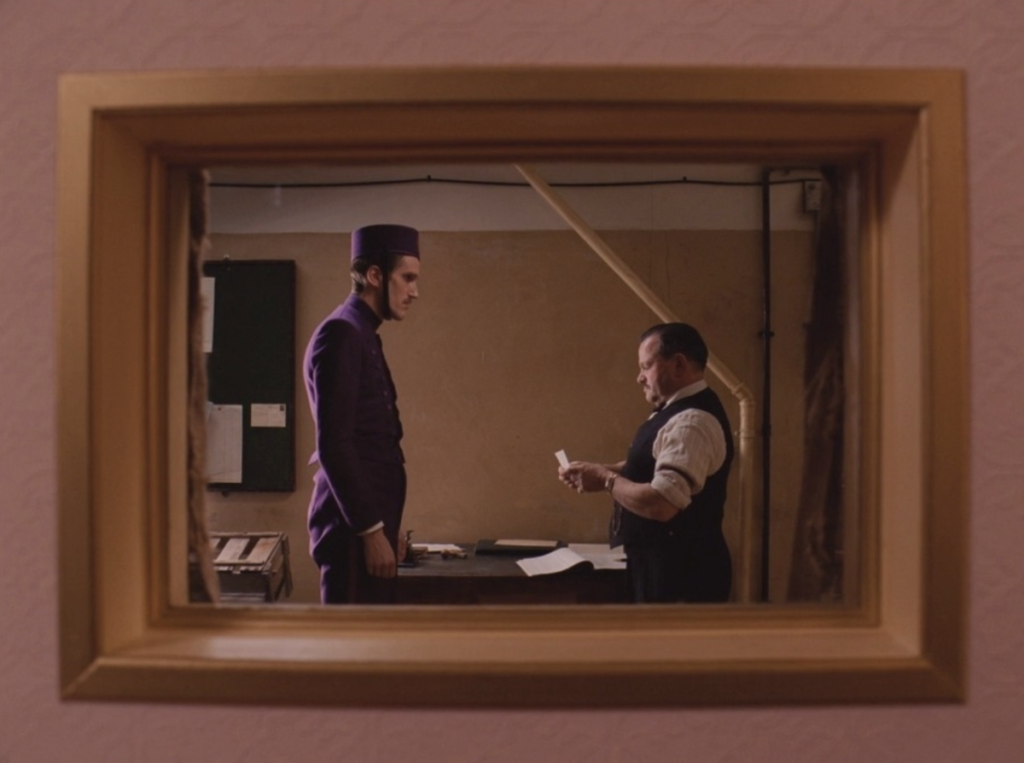In Wes Anderson’s Grand Budapest Hotel, cinematography is utilized in a unique way. Throughout the film, Anderson uses the technique of multiple frames within frames. This technique represents the complex narrative structure of the film as a whole. The layered frames visually illustrate the many layers of storytelling within the film. Additionally, this cinematic choice also places a comical effect on the film. It adds visual humor to the storytelling, which aligns with Anderson’s comic effects and overall stylistic approach. For example, throughout the film there are many scenes which show the hotel staff completing their everyday tasks. He utilizes multiple frames in order to emphasize that the hotel staff are performing their jobs with precision; however, the synchronized movements within the frames provide a comedic effect to the scenes as the actions are all exaggerated. Furthermore, in order to enhance the comedic aspect in the film, Anderson intensifies the symmetry and the overall nature of the characters.
